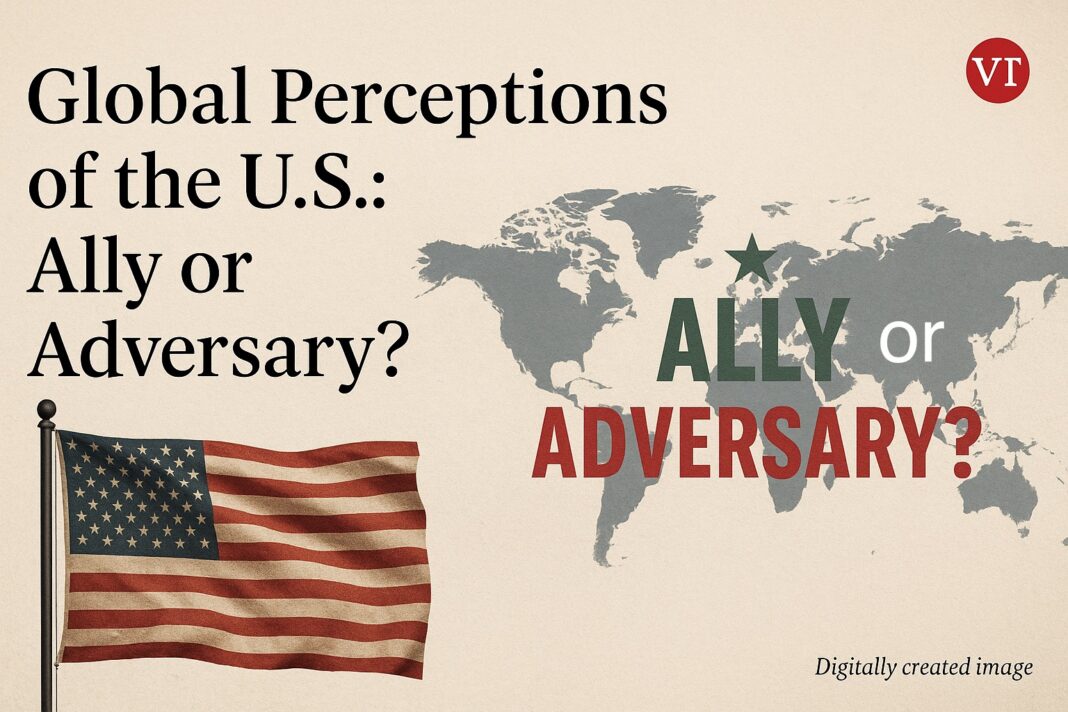In a sweeping new survey that underscores the complexity of global geopolitics, the Pew Research Center has found that while many nations view the United States as a vital ally, others increasingly see it as a top threat. The findings—drawn from interviews with over 28,000 adults across 25 countries—reveal a world sharply divided in its perception of American influence.
A World Split on U.S. Influence
According to Pew’s Spring 2025 Global Attitudes Survey, the United States is considered the most important ally by respondents in 15 countries, including Israel (95%), South Korea (89%), Japan (78%), and the United Kingdom (51%).
Yet in a striking paradox, the U.S. is also named the greatest threat by respondents in eight countries—including neighboring Canada (59%) and Mexico (68%)—both of which also rank the U.S. as their top ally. This duality is most pronounced in the Americas, where Argentina, Brazil, and Kenya also list the U.S. as both their top ally and top threat. The survey’s open-ended format allowed respondents to name any country without prompts, offering a raw glimpse into public sentiment.
Rising Threat Perceptions
The perception of the U.S. as a threat has surged in recent years. In Canada, the share of respondents naming the U.S. as their top threat nearly tripled from 20% in 2019 to 59% in 2025. Mexico saw a similar spike, rising from 56% to 68%.
Analysts attribute this shift to escalating trade tensions, aggressive rhetoric from U.S. leadership, and controversial foreign policy decisions, including the shuttering of USAID and sweeping tariffs under President Donald Trump.
In Europe, Russia remains the dominant perceived threat—named by majorities in Germany, France, the Netherlands, Poland, Sweden, and the U.K. However, the U.S. is also frequently cited as a secondary threat, particularly in Spain, where it ties with Russia.
Ideological Fault Lines
Political ideology plays a significant role in shaping these views. In several countries, left-leaning respondents are more likely to see the U.S. as a threat, while right-leaning individuals tend to view China as the greater danger. This pattern holds in the U.S. itself, where 58% of Republicans name China as the top threat, compared to just 28% of Democrats, who more often cite Russia.
Supporters of right-wing populist parties in Europe—such as Fidesz in Hungary, AfD in Germany, and National Rally in France—are significantly more likely to view the U.S. as an ally.
Economic vs. Security Threats
The nature of the perceived threat also varies. The U.S. is largely seen as an economic threat, especially in Canada, Argentina, and Mexico, where trade policies and sanctions have had tangible impacts. In contrast, Russia is viewed primarily as a security threat, particularly in Europe due to its ongoing war in Ukraine.
China occupies a middle ground—seen as both an economic and security threat in countries like the U.S., South Korea, and India. In Japan, however, China is viewed more as a security risk than an economic one.
Strategic Implications
The survey’s findings highlight a critical challenge for U.S. foreign policy: maintaining alliances while mitigating perceptions of hostility. As Mark Cogan, a peace and conflict studies professor in Japan, told TIME,
With global allegiances in flux and ideological divides deepening, the U.S. faces a pivotal moment in redefining its role on the world stage—not just as a superpower, but as a partner.
Sources
A global media for the latest news, entertainment, music fashion, and more.















